|
|
Post by VeeVee on Sept 16, 2008 16:43:03 GMT -5
Welcome Tony. Thanks for the pictures and info. Great stuff.
I wonder if my wife's grand uncle is in one of those pictures. He was a PAAC pilot. Capt. Villamor was one of their instructors. He's still alive. I hope I can get to ask him about it sometime.
|
|
|
|
Post by eljefe on Sept 16, 2008 17:43:22 GMT -5
VeeVee, what class did your wife's grand uncle belong too?
|
|
|
|
Post by VeeVee on Sept 17, 2008 6:42:01 GMT -5
I don't know. I'll see if I can find out.
|
|
|
|
Post by RayAdillO on Sept 18, 2008 6:07:31 GMT -5
As they say...."if you build em', you'll win your wings!" ;D   I built this model... Cheers, Tony Hi Tony! I took the liberty of posting your wonderful work here. I copied them from the Timawa forum. I somehow can't access your images there anymore, but I remember you have other models of PAAC aircraft like the biplane and the bomber? I sure hope that you can post more pictures of those here, if that's alright. |
|
|
|
Post by RayAdillO on Sept 18, 2008 6:27:46 GMT -5
Any ideas on the uniform?Mostly in this photo they woreKhakai Garrison caps, black ties, khaki Shirts and Trousers. And I see 4 of them wearing khaki overalls!  Some wearin the US pith Helmet with a large PAAC Diamond Insignia on the side. They also were issues Khaki Pershing hats.  Very keen observation Legionnaire. PAAC diamonds on helmets, I love this new discovery!, although I wonder if that white looking insignia in front of their sunhelmets is supposed to be a bird wing. Then they have round shoulder patches with winged airscrew insignia on them, pilots or groundcrewmen? The helmets are probably also guinit as I've seen pictures of guinit helmets which look different from the usual "wolseley" style and more like the U.S. pith. |
|
cco23i
History Student
  "But I don't wanna go back to the States"
"But I don't wanna go back to the States"
Posts: 94
|
Post by cco23i on Sept 18, 2008 12:40:05 GMT -5
The coveralls (on the B-10 shot) look to a 38 pattern but an't see how it closes, the 38's closed with a zipper and looked like the 42 pattern which closed with the 13 star buttons. Great shot!
Scott
|
|
|
|
Post by legionnaire on Oct 2, 2008 14:03:28 GMT -5
 cover art for Nov. 74 issue , In another issue they included a removeable poster sheet of this cover Art work without the text. 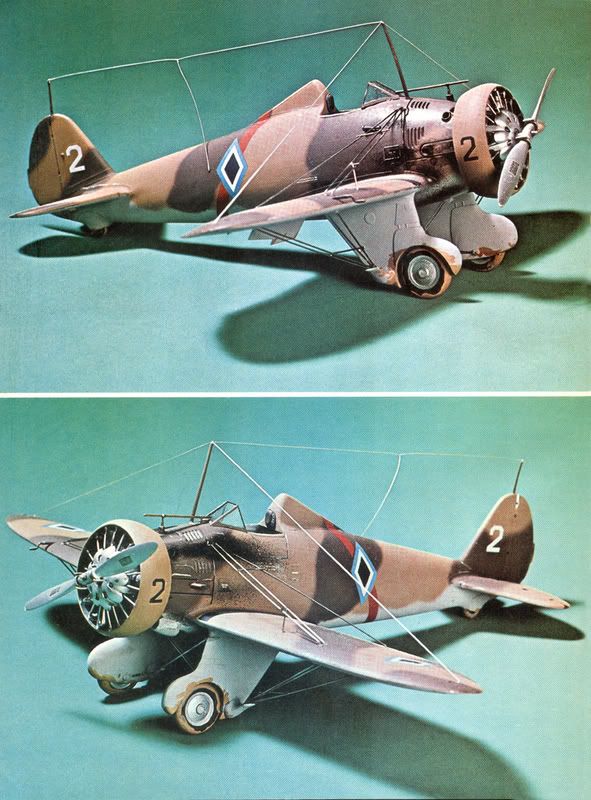 Hasegawa 1/32 Scale model kit with PAAC markings from the magazine Here three versions of camo color schemes I found. 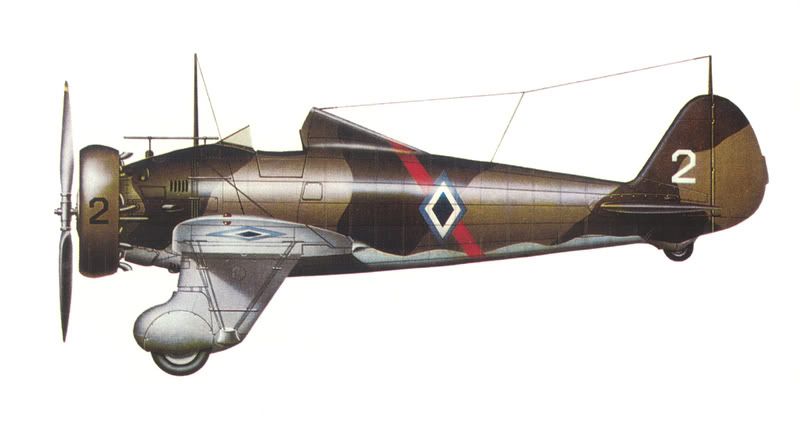 #2 camo pattern and with red stripped markings 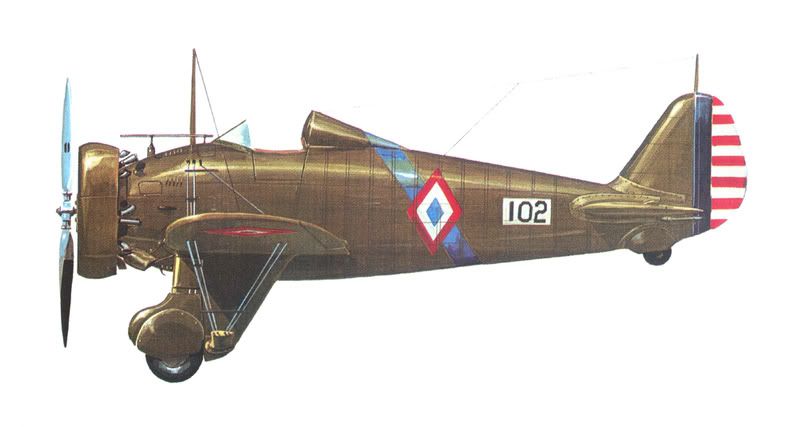 # 102 no camo pattern but with blue stripped marking 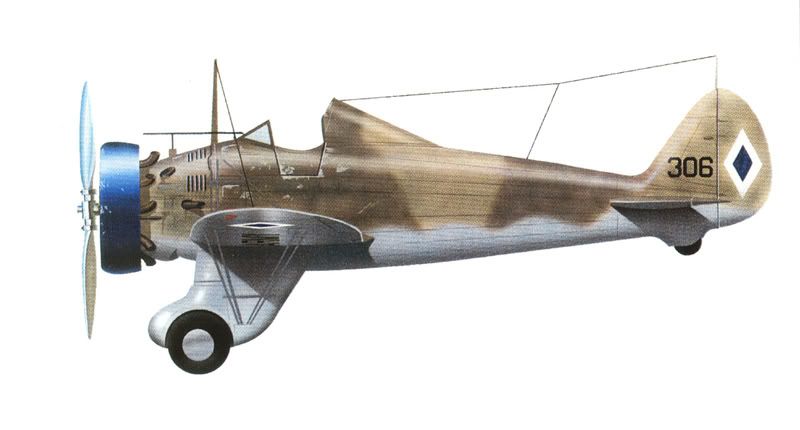 # 306 camo pattern - similar camo pattern and colors to the Aviation History magazine Illustration and the Hobbycraft kit box art cover. |
|
|
|
Post by rickthelibrarian on Oct 2, 2008 19:48:52 GMT -5
Tony, I'm IMPRESSED!! Where were you when I was working on my "Airpower" article in 1987? (Don't tell me you were still in diapers - I don't want to know!!) Great modelling and analysis!! Guess I'd better start visiting this forum again!!  |
|
|
|
Post by 26th on Oct 2, 2008 21:59:04 GMT -5
Hi Philip
It that your model you built or a shot from the book? I used to have those and sold them years ago. My tanks were my first choice for years.
Captain Rudy
|
|
|
|
Post by legionnaire on Oct 3, 2008 12:19:04 GMT -5
Hi Rudy,
The two images built for the magazine article with the cover art on the P-26.
Philip
|
|
|
|
Post by legionnaire on Oct 7, 2008 16:56:07 GMT -5
Here's an interested rare color photo of a PAAC markings Beach C-45 craft. Used in shuttling pilots from and crews from one beleaguered field to another. 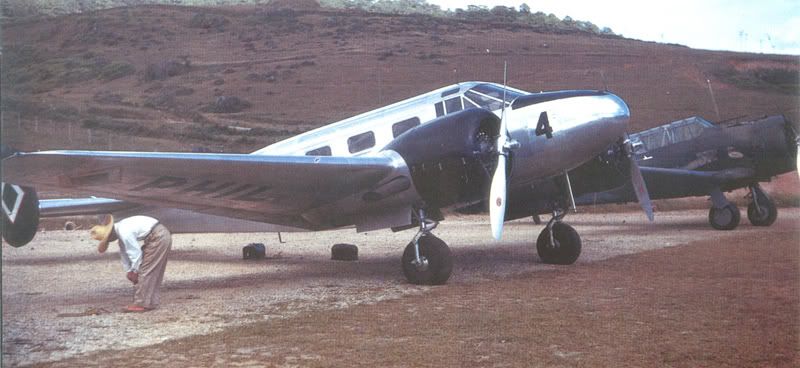 Philip |
|
|
|
Post by eljefe on Oct 8, 2008 4:13:10 GMT -5
Tony, I'm IMPRESSED!! Where were you when I was working on my "Airpower" article in 1987? (Don't tell me you were still in diapers - I don't want to know!!) Great modelling and analysis!! Guess I'd better start visiting this forum again!!  Hi, I was graduating highschool and entering college, still played competitive basketball at that time.  I have a copy of your airpower article. Good work! Cheers, Tony |
|
|
|
Post by rickthelibrarian on Oct 9, 2008 9:46:12 GMT -5
Legionnaire -- isn't that a post-war C-45? The markings look like post-war. Always open to correction, of course.
|
|
|
|
Post by legionnaire on Oct 9, 2008 12:57:18 GMT -5
Rick,
You could be right as the book may have some inaccuracies on info. Like the photo says it's B-17D but you were able to identify it as a C model.
Philip
|
|
|
|
Post by eljefe on Oct 10, 2008 11:06:41 GMT -5
Legionnaire -- isn't that a post-war C-45? The markings look like post-war. Always open to correction, of course. That colored photo of a C-45 in PAAC markings is real and accurate as this was taken at Loakan Airfield in Baguio in late 1941. Notice the A-27 (Dive bomber version of the T-6 Texan) at the background. The PAAC roundel had a variation of a red-trim in some aircraft but was absent from the PT-13s and 76Ds as the wings were already red. FWIW, |
|
|
|
Post by eljefe on Oct 10, 2008 11:56:04 GMT -5
 cover art for Nov. 74 issue , In another issue they included a removeable poster sheet of this cover Art work without the text.  Hasegawa 1/32 Scale model kit with PAAC markings from the magazine Here three versions of camo color schemes I found.  #2 camo pattern and with red stripped markings  # 102 no camo pattern but with blue stripped marking  # 306 camo pattern - similar camo pattern and colors to the Aviation History magazine Illustration and the Hobbycraft kit box art cover. The schemes portrayed are speculative. Here's my two cent's worth: The Hasegawa call for a Mid-stone Dark earch color over light grey (or Hobbycraft' version -- light blue). However, officialy, the USAAC never used the brown color as standard but more of a temporary color scheme used in manuevers and training. By the time the P-26s were tranferred to the P.I., they no longer sported the Olive Drab 31 ( a darker version of the Olive Dab and ore on the brown shade) as the standard USAAC color was True Blue 23 for the fuselage and Yellow wings. Olive Drab (some with blotches of Medium Green in some aircaftt over neutral grey came back as the standard camo for USAAC and USAF by late 40s and early 41. From what I know the prevalent paint present in the P.I was Olive Drab 41 and NG and there may have been some Medium an Dark Green paint in the Phil Air Depot when the war started. (note that when the Japanese occupied the depot, there were large quantities of OD paint and some of their aircraft were even painted with the captured OD paint) Going back to the P-26 color, the speculation of having the brown colors maybe attributed to the ff: - the fading of OD in the tropics. Note that Olive Drab 41 tends to fade to the brownish and khaki hue. Those PAAC P-26s aircraft that possibly recieved the camo colors where the ones in NMF finish when it was transferred. Now during my interview with the late Bert Anido, he interviewed some ground crews and mentioned that the crews hastily painted the P-26s with brushes! (Not a surprise as even the famous British Spitfire in the early parts of the Battle of Britain were also hastily painted by hand brush -- but with a large rubber templates to determine the A or B scheme) Again in a Small Air Force article, Bert also mentioned that in no time did the PAAC P-26s sport the "brown schemes" *** If you want to see an aircraft that had a color brown in its camo scheme, look at the color photo the Legionnaire posted on the C-45. The A-27 at the background is painted in Dark Earth and Dark Green-- why? -- this was based on a RAF color scheme that was also adopted by the Siamese (Thai) Royal Airforce. Note that these A-27s were made specifically for Siamese Royal airforce but were instead diverted to the Philippine to augment the USAAC's 27th Bombardment Group. It was said that had the Siam roundels and was just painted over with US stars and give red white and blue stripes on the tail*** As for the aircraft illustrated, here are my comments: - Hasegawa got the PAAC diamond colors wrong # 2 Camo scheme came from the Hasegawa color diagram with the kit. -- the #2 aircraft may have been based on P-26s used by US instructors who flew from Nielson's airfield to Zablan Field (daily) when they trained the Filipino pilots. They may have been numbered "1" and "2" and were painted in bold white so that pilots in training can identify and follow them during formation flight. # 102 is aircraft 33-102 found in the Aerofax: Boeing P-26s and is listed and confirmed as an aircraf sent to the PI but the color scheme.-- overall olive drab is not confirmed, even the placement of the number is speculative #306 is an illustration from the mini-squadron P-26 book (again with the brown scheme which is unlikely). -notice that all the aircraft illustrated shows the early P-26As with the rounded tail wheels and the individual exhaust on the engine. Those transfered to the PAAC were mostly the late model P-26As which had the higher tail wheels and with the collective exhaust on the engine and with wing flaps (the early P-26A did not have this, hence they were modified and added with the mentioned modifications-- thus were called P-26A late versions) Even the illustration of the P-26s attacking the Nells is now in question. The only Nell equiped unit that was active during the invasion of the Philippine was the IJN's 1st Kokutai.Villamor's claim of a "Nell" in Batangas is unlikely as I can't find any records of the 1st Ku attacking Batangas Field in December of 1941. It was either the Takao Ku or the Kanoya Ku -- both units were armed with G4M Bettys. The tail codes of the Nell in the illustration is "X" which is wrong as "X" was used by the 3rd Ku which at that time was already a fighter unit armed with A6M2 Zeros. The 1st Ku had a "Z" tail code. The alleged Nell that was credited to Villamor was said to have been the one that crash landed at Clark Field after a bombing attack in the Manila area. The Nell was damaged and made an emergency landing at Clark on its way back to Tainan Airbase wherein the crew was captured. It is likely that the aircraft was damaged by more by AA rather than the .30 cals of the P-26s. FWIW, |
|
|
|
Post by RayAdillO on Oct 15, 2008 4:09:52 GMT -5
Well lookie here.........  A bit weird with the "spaghetti" music, but hey it's something. We've got to help this kid with some PA and PAAC reenactment shots. I wonder how we could get in touch with him? |
|
|
|
Post by legionnaire on Oct 15, 2008 14:50:35 GMT -5
that's the Philippine "Pulang Baboy"  (Porcorosso) |
|
|
|
Post by VeeVee on Oct 16, 2008 7:12:50 GMT -5
Great research Eljefe. Is it possible that they mistakenly identified the Japanese bombers as Nells when they were actually Bettys?
|
|
|
|
Post by eljefe on Oct 16, 2008 9:05:56 GMT -5
Great research Eljefe. Is it possible that they mistakenly identified the Japanese bombers as Nells when they were actually Bettys? Could be. Misidentification during WWII was very common especially during the early parts of the conflict. You may have noticed that every Japanese fighter plane identified was a "Zero" in most reports wherein in reality they could have been Ki-43 Oscars and other aircraft. Even the top aces themselves misidenditified their own kills and that is the reason between discrepancies when you compare statistics and facts from both sides. Again my two cents worth. Tony |
|